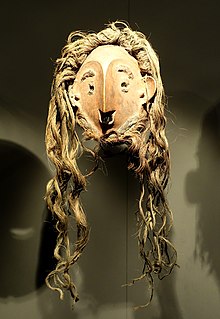
Back Lýková vlákna Czech Пушăт CV Bast (fiber) Danish Bastfaser German Bastfibro Esperanto Niin (materjal) Estonian Niini Finnish Fibre libérienne French 인피섬유 Korean Bastfiber NN



Bast fibre (also called phloem fibre or skin fibre) is plant fibre collected from the phloem (the "inner bark", sometimes called "skin") or bast surrounding the stem of certain dicotyledonous plants. It supports the conductive cells of the phloem and provides strength to the stem. Some of the economically important bast fibres are obtained from herbs cultivated in agriculture, as for instance flax, hemp, or ramie, but bast fibres from wild plants, such as stinging nettle, and trees such as lime or linden, willow, oak, wisteria, and mulberry have also been used in the past.[1] Bast fibres are classified as soft fibres, and are flexible.[2] Fibres from monocotyledonous plants, called "leaf fibre", are classified as hard fibres and are stiff.[2]
Since the valuable fibres are located in the phloem, they must often be separated from the xylem material ("woody core"), and sometimes also from the epidermis. The process for this is called retting, and can be performed by micro-organisms either on land (nowadays the most important) or in water, or by chemicals (for instance high pH and chelating agents) or by pectinolytic enzymes. In the phloem, bast fibres occur in bundles that are glued together by pectin and calcium ions. More intense retting separates the fibre bundles into elementary fibres, that can be several centimetres long. Often bast fibres have higher tensile strength than other kinds, and are used in high-quality textiles (sometimes in blends with cotton or synthetic fibres), ropes, yarn, paper, composite materials and burlap. An important property of bast fibres is that they contain a special structure, the fibre node, that represents a weak point, and gives flexibility. Seed hairs, such as cotton, do not have nodes.[citation needed]
- ^ Mary Dusenbury (1992), "A Wisteria Grain Bag And Other Tree Bast Fiber Textiles Of Japan", Textiles in Daily Life: Proceedings of the Third Biennial Symposium of the Textile Society of America, September 24–26 1992
- ^ a b Esau, K. (12 January 1977). Anatomy of seed plants. New York: John Wiley and Sons. ISBN 978-0-471-24520-9.
© MMXXIII Rich X Search. We shall prevail. All rights reserved. Rich X Search